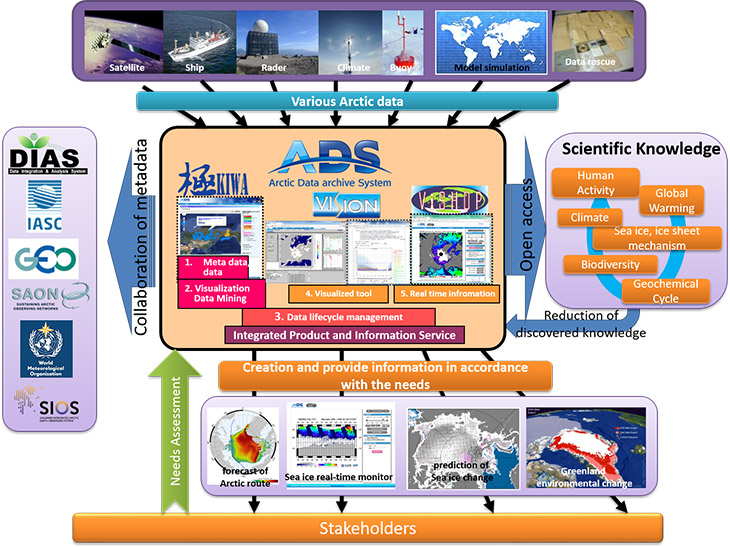Theme 8
Arctic Data Archive System (ADS)

PI : Hironori Yabuki (NIPR)
Background of the Research
"Open Science" is becoming increasingly important. In Open Science, the outcomes of research supported by public funding, including scientific theses, reports, data, and methods, are made available to the public, and these published outcomes also promote new scientific knowledge creation and innovation. The Arctic environment is composed of the atmosphere, ocean, land, and human society, and changes in each of these areas are intertwined in a complex manner. Fully understanding environmental changes in the Arctic region is very difficult, but many research have been carried out in these respective fields. Their scientific achievements include many sets of observation data and satellite data, as well as simulation data, and these are the "Big Data" of Arctic research. Promoting Open Science including this Big Data can be expected to contribute to new interdisciplinary collaboration and innovation.
Overview of the Research
The Arctic Data archive System (ADS) aims to develop an Open Science infrastructure for Arctic research, and will promote the mutual distribution of the Big Data of Arctic research. Furthermore, ADS will develop analysis and visualization Web services for integrated Big Data, and intends to generate new value with Big Data.

Concepts of data distribution and international cooperation in ADS
Cooperative Institutions / International Projects
World Meteorological Organization (WMO), Group on Earth Observations (GEO), Sustaining Arctic Observiting Networks (SAON), International Arctic Science Committee (IASC)
Implementation Structure
| Members | |
|---|---|
| Name | Institutes |
| Hironori Yabuki | National Institute of Polar Research |
| Takeshi Sugimura | National Institute of Polar Research |
| Takeshi Terui | National Institute of Polar Research |
| Collaborators | |
|---|---|
| Name | Institutes |
| Keiko Iino | National Institute of Polar Research |
ArCS Blog
- Russia-Japan Workshop on Arctic Research (March 02, 2018)
- Arctic sea ice extent is likely to be the second lowest (September 13, 2016)
- Importance of the satellite observations (March 11, 2016)




